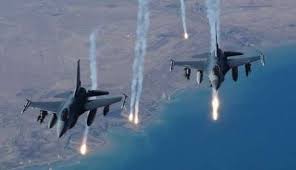
Saudi Airstrikes Violate UN-Declared Ceasefire in Yemen
Local Editor
Shortly after a humanitarian ceasefire went into effect in Yemen, Saudi warplanes struck several areas across the impoverished country, violating the UN-sponsored truce.
The temporary ceasefire was meant to last a week to allow aid deliveries to the country’s 21 million people who have endured more than three months of Saudi-led bombing.
The Saudi-led coalition has not committed to the ceasefire, and the leader of the Houthi rebels said he did not expect it to hold.
The Saudi-led warplanes hit Saada, Shabwa and Taiz in Yemen a few minutes after the truce went into effect, .
The warplanes also struck a house in Jabal Jarra, and a truck loaded with food supplies in al-Arish city in Aden province.
The aerial aggression continued into the early hours of Saturday morning, with the Saudi-led warplanes hitting Maalla, Khor Mikser and Ribat areas in Lahj province.
Earlier on Friday, the United Nations [UN] Security Council called on observing the break in fighting, which is slated to run up to the end of the holy month of Ramadan on July 17.
The Leader of Yemen’s Ansarullah movement, Sayyed Abdul-Malik al-Houthi, said he was doubtful about the ceasefire, as he stated in a televised speech on Friday.
He expressed small hope about the expected humanitarian pause sponsored by the UN, justifying that Yemen’s experience during the previous truce was bitter.
"The success of the truce is related to the Saudi regime and dependent on stopping the aggression," he said, urging all involved aggressors to end their war on Yemen immediately.
A Saudi-led coalition backed by the United States has been carrying out airstrikes against Yemen since March. The airstrikes have not been authorized by the UN.
According to UN records, the Saudi attacks have killed more than 2,600 people and injured at least 11,000 since the military aggression began against Yemen on March 26.
